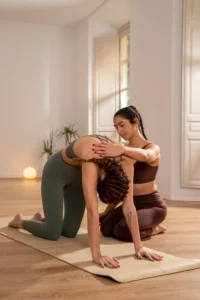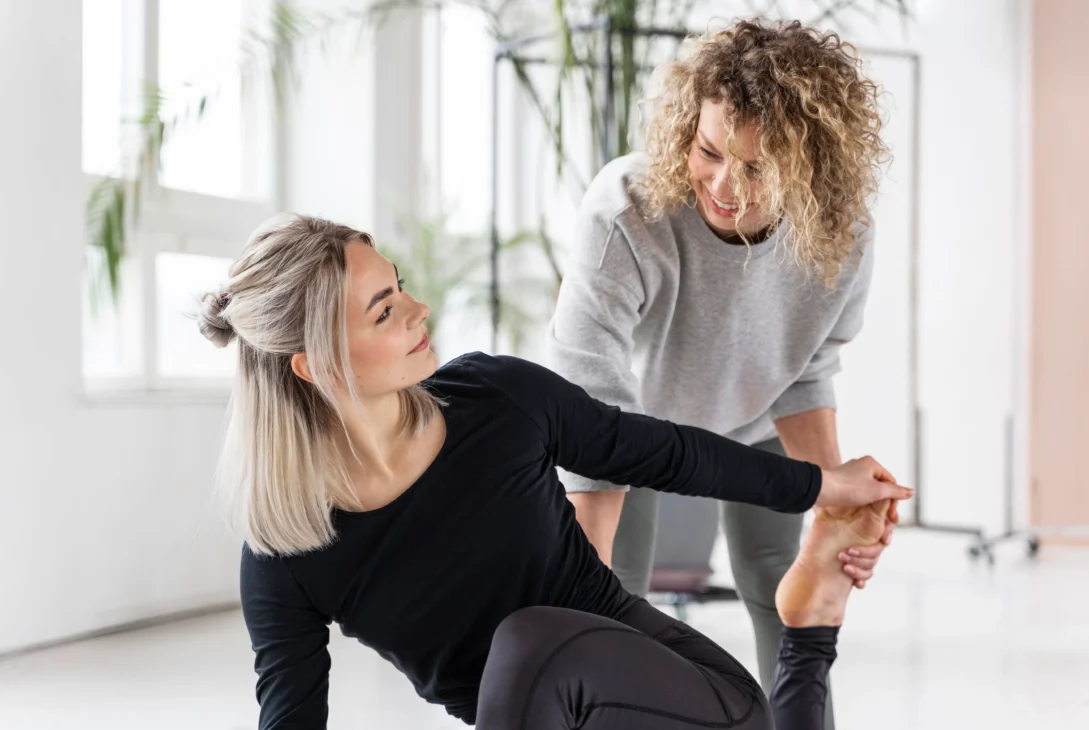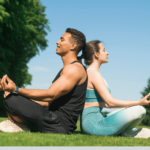If you’re looking for a gentle, effective way to relieve pain and improve your body’s function, Feldenkrais therapy may be the solution. Based on the principles of the Feldenkrais Method, this therapy uses slow, mindful movements to retrain your body and nervous system. The result is better posture, less pain, and greater ease in everyday life. Rooted in neuroscience and developed by physicist Moshe Feldenkrais, this unique method uses mindful movement to help people retrain their bodies and rewire their brains. Whether you’re dealing with chronic pain, recovering from injury, or simply feeling stiff and unbalanced, the Feldenkrais Method offers a powerful yet non-invasive path to healing and improved function.
In this blog, we’ll explore how Feldenkrais therapy works, its core techniques, and why more people are turning to this movement-based approach to restore ease, alignment, and confidence in their daily lives.
What Is Feldenkrais Therapy?
Feldenkrais therapy is a movement-based approach rooted in neuroscience and somatic learning. Instead of focusing on muscle strength or flexibility alone, it improves movement efficiency by increasing your awareness of how you move.
The idea is simple: when you become more aware of your movement habits—especially the ones that cause pain or tension—you can change them. Over time, this leads to:
- Better alignment
- Reduced strain
- Pain-free, fluid movement
This therapy taps into neuroplasticity—your brain’s ability to change and adapt—by using gentle, exploratory movement to create new, healthier patterns.
How the Feldenkrais Method Works The Feldenkrais Method works by improving the connection between your brain and body through gentle, mindful movement. Instead of stretching or strengthening muscles in isolation, it focuses on teaching your nervous system to move more efficiently. Through slow, exploratory movements, you become more aware of your posture, habits, and areas of tension. This increased awareness allows your brain to form new neural pathways—helping you replace limiting or painful movement patterns with ones that are more fluid, balanced, and pain-free. Over time, this approach leads to long-lasting improvements in mobility, coordination, and overall well-being.
The Feldenkrais Method includes two main approaches:
1. Awareness Through Movement (ATM)
These are structured movement lessons typically done in a class or guided session. Participants lie or sit and follow verbal instructions that guide them through slow, repetitive movements. These lessons are designed to improve coordination, flexibility, and self-awareness.
2. Functional Integration (FI)
This is the hands-on form of Feldenkrais therapy, offered one-on-one with a trained practitioner. Using gentle touch, the practitioner helps guide your body through subtle movements. These sessions are personalized to your body’s unique patterns and needs.
Why People Choose Feldenkrais Therapy
Unlike treatments that focus only on symptoms, Feldenkrais therapy works by improving how your brain and body communicate. Many people find that they feel taller, looser, and more balanced after just one session.
Benefits of Feldenkrais Therapy include:
- Relief from chronic pain (back, neck, shoulders)
- Improved balance and coordination
- Better posture and alignment
- Recovery from injury or surgery
- Reduced muscle tension and stress
- Increased mobility in joints
Whether you’re an athlete, an artist, or simply someone looking to move more comfortably, the Feldenkrais Method can help you reconnect with your body.

Who Can Benefit from the Feldenkrais Method?
Feldenkrais therapy is suitable for people of all ages and abilities. It is often used by:
- Seniors looking to maintain mobility
- People recovering from injury or neurological conditions
- Dancers, musicians, and athletes are improving their performance
- Individuals with chronic pain or fatigue
Because it’s gentle and non-invasive, it’s also ideal for those who are unable to participate in strenuous physical therapy.
Getting Started with Feldenkrais
If you’re curious about the Feldenkrais Method and want to explore its numerous benefits—such as enhanced mobility, reduced pain, and increased body awareness—there are several accessible ways to begin. Whether you prefer group learning or individualized guidance, there’s an entry point that can meet your comfort level, schedule, and budget.
1. Local Group Classes or Workshops
Many cities offer in-person Feldenkrais classes led by certified practitioners. These group settings are a great way to experience the method in a supportive and social environment. Classes typically follow the Awareness Through Movement (ATM) format, where the teacher verbally guides participants through gentle, structured movement sequences. Workshops can be a great introduction or a way to deepen your understanding over a weekend or a short series.
2. Online Awareness Through Movement (ATM) Lessons
If in-person attendance isn’t possible, or if you prefer learning at your own pace, online ATM lessons are a highly flexible option. Many practitioners and organizations offer free or low-cost recorded sessions that you can do from the comfort of your home. These audio-guided lessons help you explore your movement patterns and gradually improve posture, balance, coordination, and ease.
3. Private Functional Integration (FI) Sessions
For more personalized attention, Functional Integration (FI) sessions offer hands-on guidance tailored to your individual needs. Conducted one-on-one with a certified Feldenkrais practitioner, FI sessions are non-invasive, fully clothed, and deeply restorative. They can be especially beneficial if you’re recovering from injury, managing chronic pain, or have specific movement goals. These sessions are customized to your body and situation, providing insights that can accelerate your progress.
4. Starting Small: Free or Low-Cost Resources
Many beginners find it helpful to start with free online ATM recordings available through YouTube or practitioner websites. These can give you a feel for the method without any commitment. As you become more comfortable, you may choose to invest in live classes or private sessions to reap deeper benefits and receive personalized support.
Many beginners start with free or low-cost online ATM recordings and gradually progress to one-on-one support.
Conclusion
Feldenkrais therapy offers a gentle, intelligent approach to healing—one that doesn’t rely on force or pain, but instead focuses on awareness, ease, and the natural ability of the body to change. By exploring simple movement patterns and retraining how the brain and body work together, the Feldenkrais Method helps unlock better posture, reduce pain, and achieve greater freedom of movement. Whether you’re recovering from an injury, managing chronic tension, or simply seeking a deeper connection to your body, Feldenkrais therapy provides a safe, effective, and empowering path forward.
In addition to mindful movement practices like Feldenkrais Therapy, a child’s overall well-being is deeply influenced by their daily nutrition. Establishing healthy habits early on, both in body awareness and diet, creates a strong foundation for lifelong wellness. If you’re looking to complement physical therapies with proper nutrition guidance, be sure to explore our in-depth guide on Food for Kids. It offers valuable tips on creating balanced meals that support growth, cognitive development, and physical activity—perfect for families aiming for a holistic approach to health.









